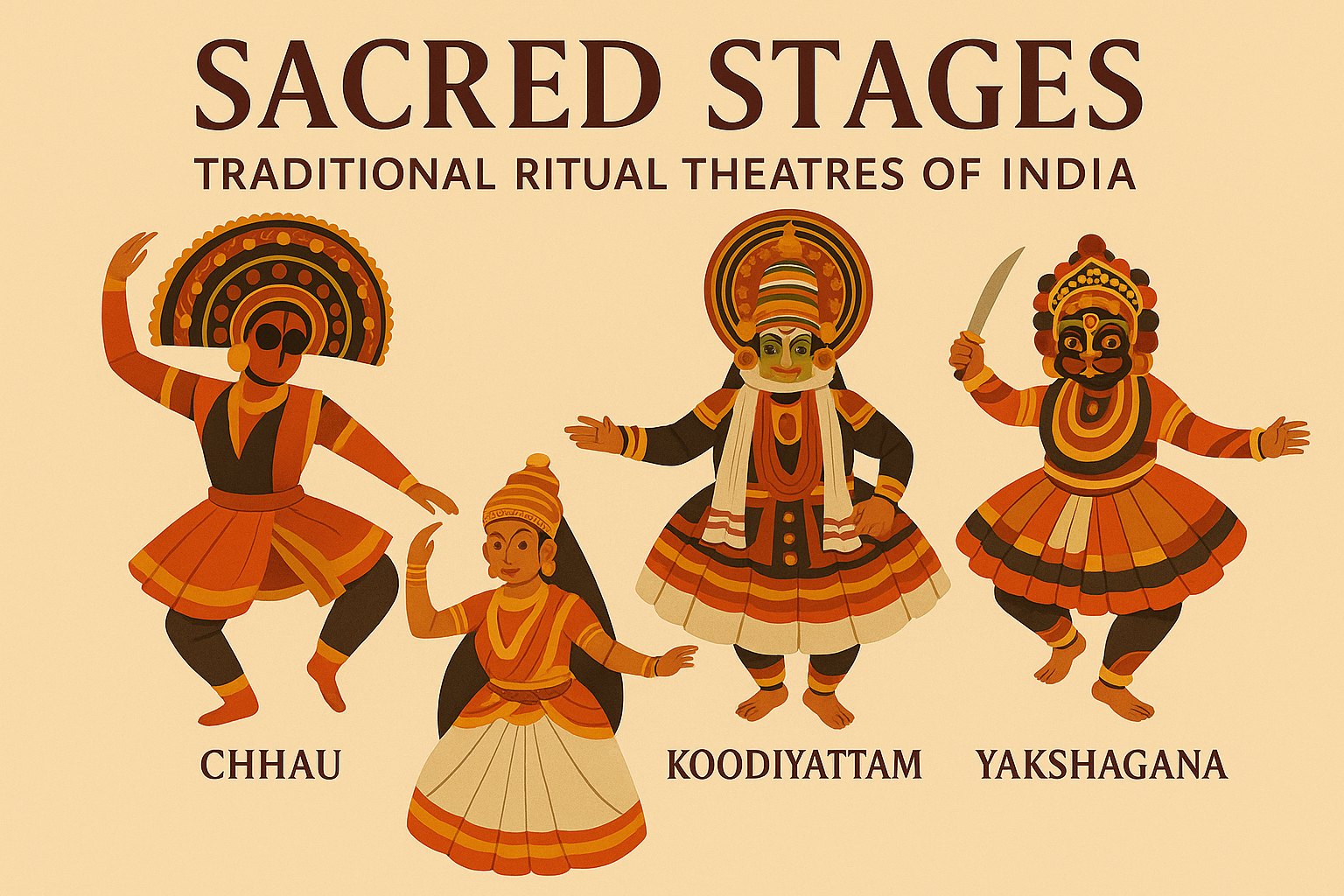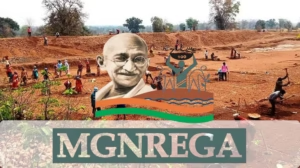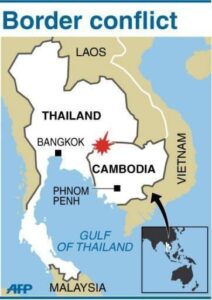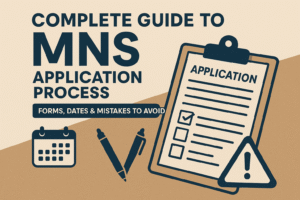Basics
- Ritual Theatre: A form of performance combining sacred ritual and dramatic expression, rooted in temples, festivals, and collective memory.
- Core Features: Acting, singing, dance, music, narration, puppetry/pantomime. Beyond entertainment → cultural, ethical, spiritual functions.
- UNESCO Recognition: Classified as Intangible Cultural Heritage (ICH) for their role in identity, continuity, and social cohesion.
- ICH in India: 15 elements inscribed in UNESCO list; ritual theatres inscribed include Kutiyattam, Mudiyettu, Ramman, Ramlila.
Relevance
- GS-1 (Art & Culture): Indian theatre traditions, UNESCO’s Intangible Cultural Heritage, role of community in cultural preservation.
- GS-2 (Governance): Role of institutions (Sangeet Natak Akademi, UNESCO collaboration), cultural policy, safeguarding heritage.
- GS-3 (Economy, Tourism, Social Development): Cultural industries, heritage-based tourism, livelihood generation through traditional arts.

UNESCO’s Framework of ICH
Five domains under the Convention for Safeguarding ICH:
- Oral Traditions & Expressions (including language).
- Performing Arts.
- Social Practices, Rituals & Festive Events.
- Knowledge & Practices Concerning Nature & the Universe.
- Traditional Craftsmanship.
Key Ritual Theatres of India
1. Kutiyattam (Kerala)
- 2000-year-old Sanskrit theatre tradition blending classical + local elements.
- Features: Abhinaya (eye-hand expressions), long training (10–15 years), performances up to 40 days.
- Sacred space: Kuttampalams (temple theatres).
- Themes: Mythology, Sanskrit dramas.
- Community role: Patronage around temples, ritual audiences.
- UNESCO ICH: Inscribed in 2008.
2. Mudiyettu (Kerala)
- Ritual dance-drama depicting Kali vs Darika.
- Performed annually in Bhagavati Kavus post-harvest.
- Rituals: Purification, drawing of kalam (image of goddess).
- Entire village participation: cross-caste roles (mask-making, costumes, performers).
- Transmission: Oral apprenticeship.
- Fusion: Dance, music, visual arts, masks.
3. Ramman (Uttarakhand)
- Annual festival (April) in Saloor-Dungra villages for deity Bhumiyal Devta.
- Features: Ramayana recitations, masked dances, local legends, ritual theatre.
- Sacred space: Temple courtyard.
- Instruments: Dhol, Damau, Manjira, Jhanjhar, Bhankora.
- Strong caste/community-based role division; collective funding.
- Transmission: Oral, apprenticeship.
4. Ramlila (North India)
- Dramatic enactment of the Ramcharitmanas by Tulsidas.
- Major during Dussehra (Ayodhya, Ramnagar, Varanasi, Vrindavan, etc.).
- Duration: 10–12 days (Ramnagar version = 1 month).
- Performed in temple grounds/public squares.
- Amateur actors from community → values of dharma, bhakti, social cohesion.
Thematic Commonalities
- Divine Storytelling: Mythological epics (Ramayana, Kali legends, Sanskrit dramas).
- Sacred Space: Temple halls, courtyards, ritual precincts.
- Community Participation: Collective labour, caste-based roles, village patronage.
- Transmission of Knowledge: Oral, guru-shishya parampara, long apprenticeships.
- Fusion of Art Forms: Drama, music, dance, ritual, masks, puppetry, visual arts.
Institutional Role – Sangeet Natak Akademi
- Established: 1953; apex body for performing arts.
- Functions:
- Documentation & Archiving (audio-visuals, manuscripts, national archive).
- Training (guru-shishya programs, workshops, capacity building).
- Awards (SNA Awards, Fellowships, Ustad Bismillah Khan Yuva Puraskar).
- Research & Publications (books, journals, monographs).
- Festivals (National Theatre Festival, Dance Festivals).
- Collaboration with UNESCO & States (ICH nominations, state funding).
- Support to Artistes (stipends, grants, costume/training aid).
Overview
- Cultural Identity: Rooted in communities, reinforcing shared memory & ethics.
- Social Cohesion: Collective participation across caste, class, gender.
- Heritage Conservation: UNESCO + state efforts safeguard ICH against decline.
- Challenges: Declining patronage, urban migration, commercialization, high costs of costumes/training.
- Opportunities:
- Linking ICH with tourism (cultural circuits).
- Using digital platforms for wider archiving & outreach.
- Strengthening community-driven preservation.
- Expanding ICH education in schools/HEIs for intergenerational transfer.
Conclusion
- Ritual theatres like Kutiyattam, Mudiyettu, Ramman, and Ramlila are living embodiments of India’s sacred traditions, not static relics.
- They serve as bridges between the divine and the everyday, sustaining continuity through community effort and ritual practice.
- Preserving them ensures not only cultural pride but also India’s contribution to global heritage safeguarding.






